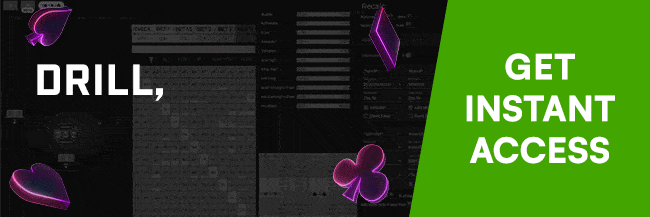Hitting a flush is one of the best feelings in poker.
You’re about to get 3 money-making tips for playing flushes that you’ve hit on the turn.
Each of these tips applies to the most common situation in which you’ll turn a flush: after defending your Big Blind against a single raise.
(You’ll have a ton of suited hands after defending your Big Blind, after all.)
I used the Lucid Poker Trainer to “discover” these tips, and I’ve included Lucid screenshots throughout this article to visualize the strategies.
Let’s dive in!
Tip #1: When Facing a Double Barrel, Make Sure You Slow-Play With Some Flushes
The worst thing you can do against a strong player is cap your range when you’re out-of-position (OOP).
A capped range is a range that contains no (or very few) strong hands, such as overpairs, two-pairs, sets, straights, flushes, etc.
Strong, aggressive players will notice when your range is capped. That will allow them to unleash a devastating attack (i.e. big and frequent bets) for which you will have no response.
Let’s say you defend your Big Blind and the flop is Kd 7c 5c. You check and call a bet. The turn is the Tc, you check, and your opponent bets again (aka double barrels).
If you always fast-play a turned flush in this scenario, you cap your check-calling range to mostly two pairs or sets.
With your range capped, your opponent can start overbetting often and there’s nothing you can do about it. This player can run you over by bluffing a ton, since they know you can’t have a flush to call down with.
Tip #1 Example
Take a look at this spot in the Lucid Poker Trainer.
Again, you defended from the Big Blind against a Button open. The board is Kd 7c 5c Tc and you face a 50% pot-sized double barrel:
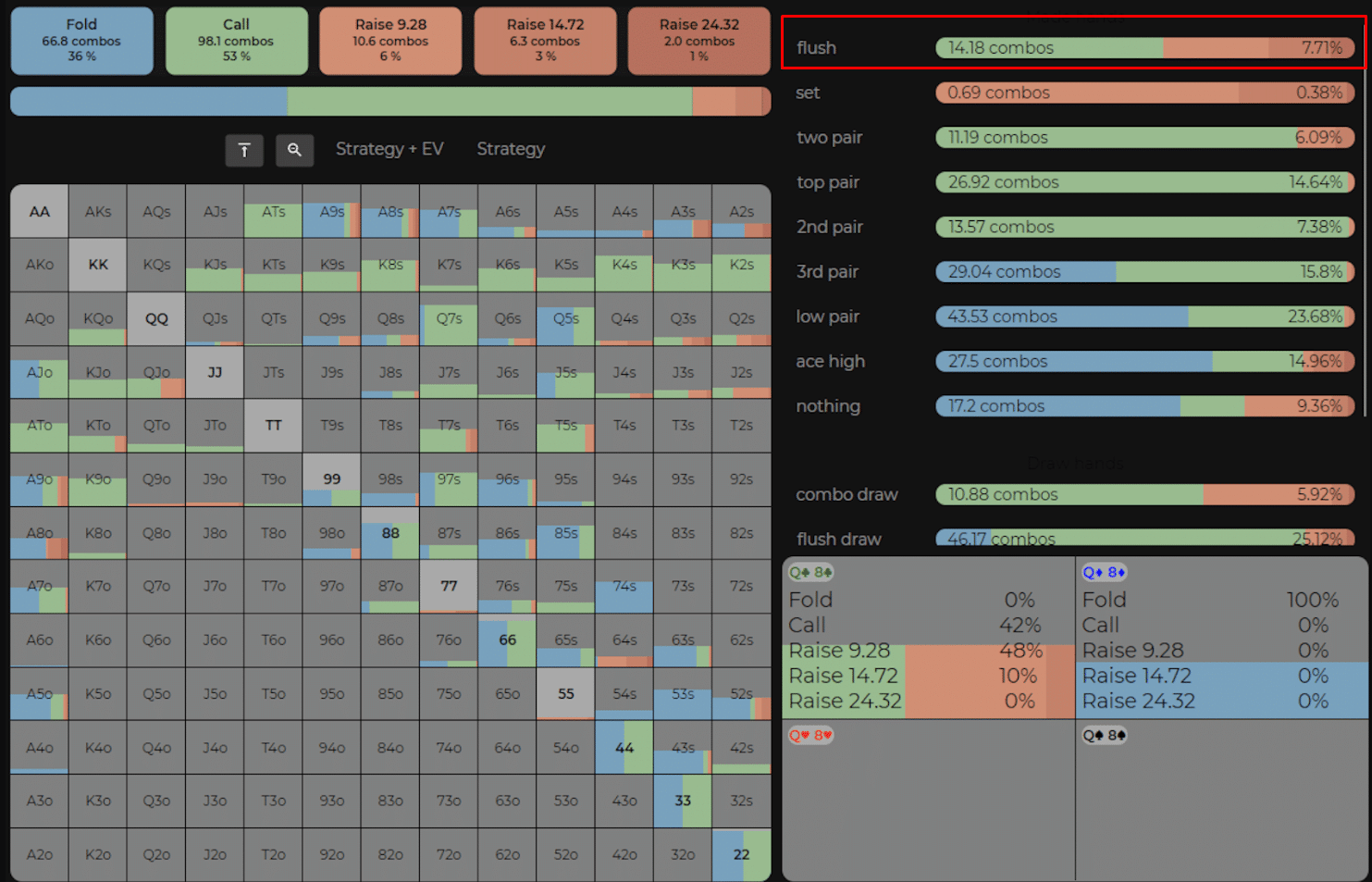
Big Blind’s range facing a double barrel on Kd 7c 5c Tc.
In the upper right corner, next to “flush” you can see a bar that is colored green and orange. I put a red box around it.
The green part represents how many flushes check-call. The orange part represents how many flushes check-raise (the darker the color, the larger the size).
In this case, Lucid Poker just check-calls with a flush around half the time (check-raising the other half of the time). Most of the check-calling is done by Kc flushes. But every hand, apart from Ac 2c and Ac 3c, mixes between the two options.
The key takeaway is that you should make sure both your check-calling and check-raising ranges include flushes. That keeps you unpredictable and makes you tough to exploit.
Lucid Poker is now available on mobile devices!
Become one with cutting-edge poker strategies inside the new Lucid Poker Trainer now. Practice your cash game skills and get instant feedback on every decision (both preflop and postflop). Join the Beta here!
Tip #2: When Your Opponent Checks Back On The Flop, Mix It Up With Turned Flushes
If you’ve been reading my articles for some time, you’ve probably seen me say “don’t slow-play”. That is sound advice, especially for beginners. Aggression is generally the best way to get value.
But as you advance to higher levels of understanding, you find that slow-playing can be a valuable tool for extracting value and protecting your ranges (in the right situations). This is especially true when you are OOP and your weak hands don’t have to option to realize their equity by checking back.
This is why you should mix it up with your flushes after your opponent checks back on the flop. Sometimes you should probe bet, sometimes check-raise, and occasionally check-call. (Yes, double slow-playing is an option in these scenarios.)
When OOP, especially against strong or unknown opponents, it’s best to always have some strong hands in your range. (This keeps your ranges protected and allows you to realize more equity with weaker hands.)
Tip #2 Example
Have a look here at the same board as before (Kd 7c 5c Tc). But this time, the Button checked back on the flop.
Here’s how Lucid Poker approaches this spot as the Big Blind:
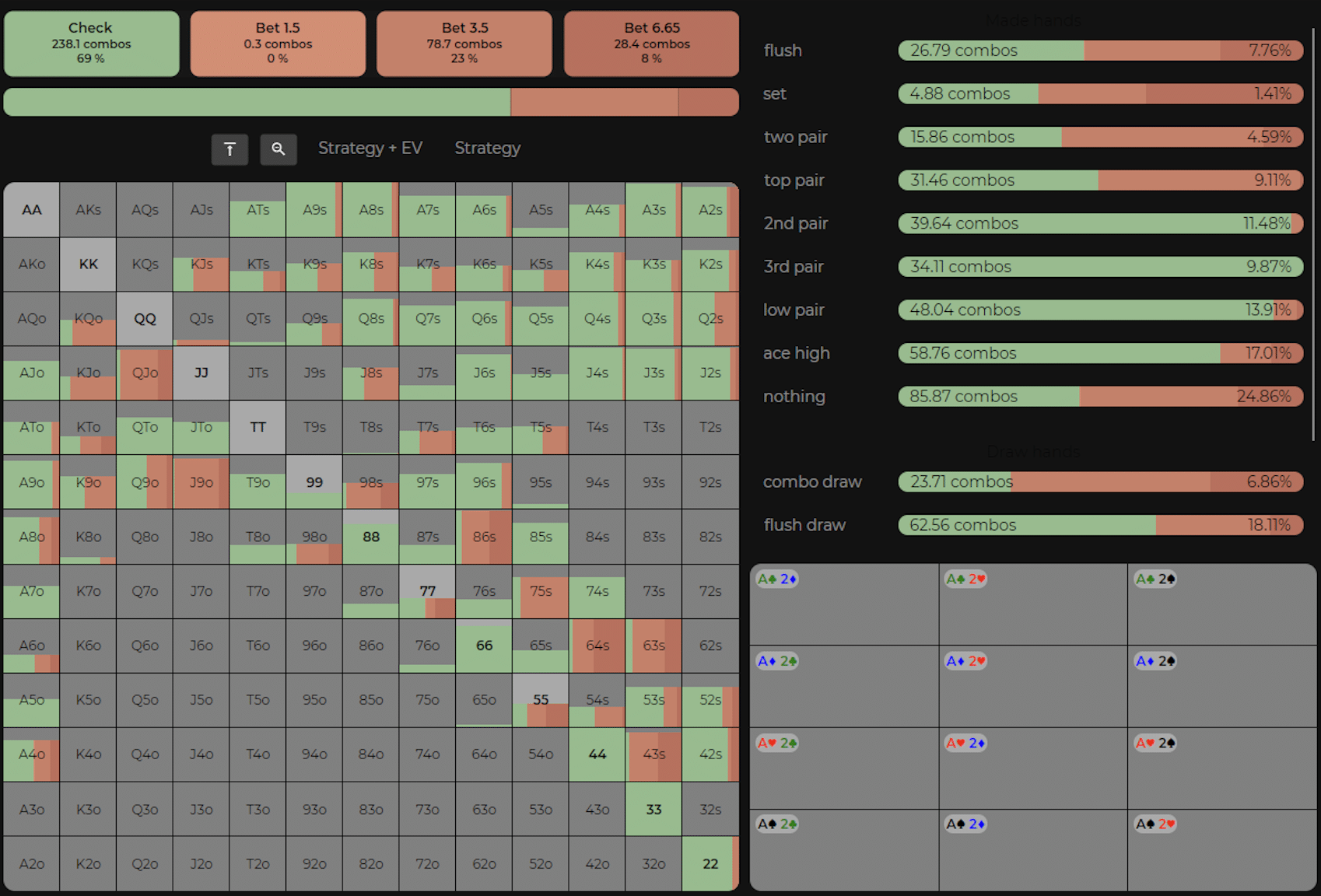
Big Blind’s range facing a flop check-back on Kd 7c 5c Tc
If you zoom in on the upper right side again, you will see that flushes are mixing roughly 50/50 between betting and checking. This is a very similar breakdown to what we saw in tip #1.
Now, what happens if you check and your opponent fires a delayed c-bet?
You will once again see that Lucid Poker will mix between check-calling and check-raising with flushes (60/40 in favor of calling, to be exact):
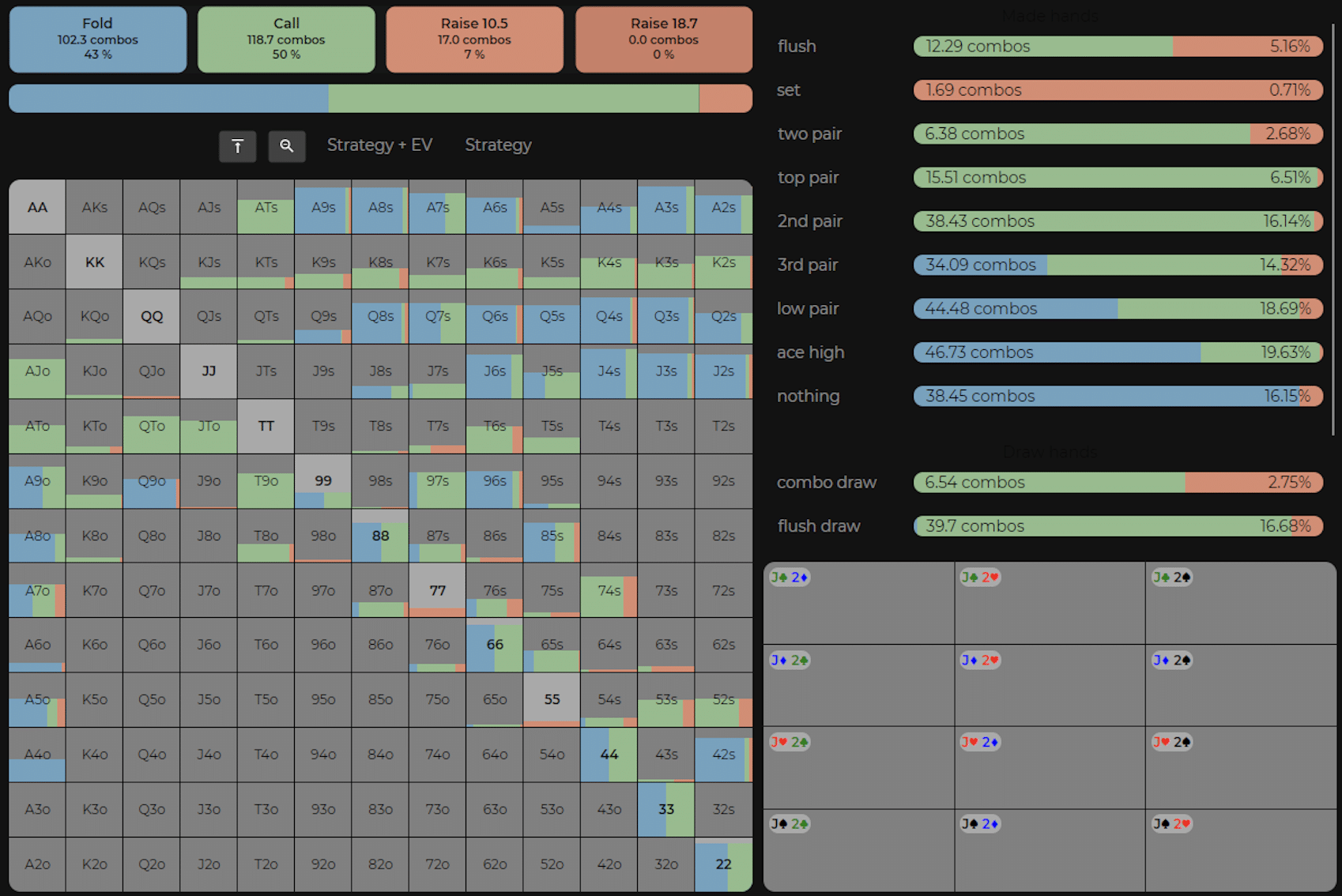
Big Blind’s range facing a delayed c-bet on Kd 7c 5c Tc
If you never check on the turn with your flushes, the Button could steal your expected value (EV) by delayed c-betting more frequently. He could use a larger size with weaker value hands and bluffs, knowing that you have no flushes with which to punish him.
The key takeaway is, once again, to make sure all of your ranges are adequately protected. The only way to do that is to make sure that, no matter what actions you take, you will always have at least some flushes in your range.
Tip #3: When Your Opponent Checks Back On The Flop, Use A Medium Size When Probe Betting
A probe bet is when you bet out of position into a player who had an opportunity to continuation bet on the prior street, but didn’t.
This final tip is also for when your opponent checks back on the flop.
Let’s continue with the same example (Kd 7c 5c Tc) but focus on bet sizing this time. The pot in this example is 5.5 big blinds (bb):
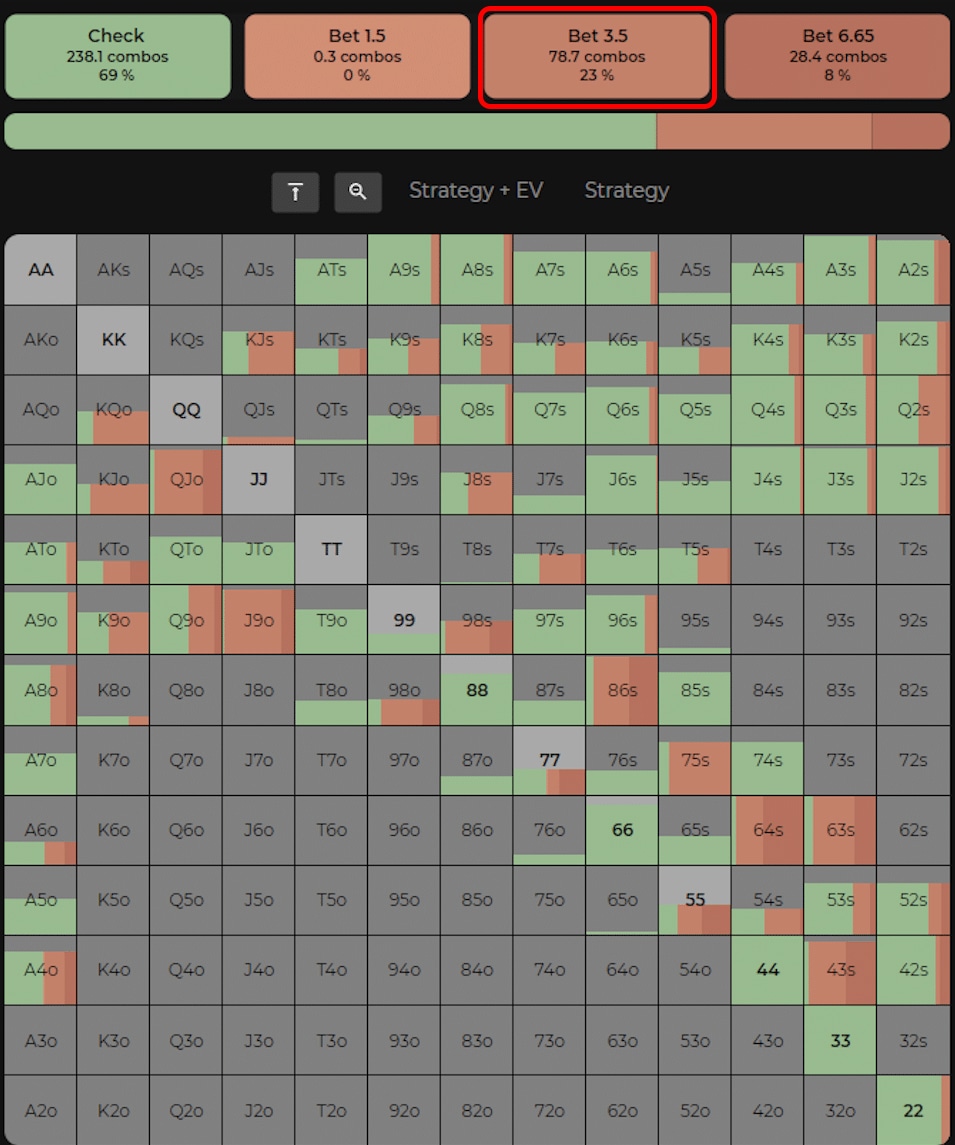
Lucid Poker’s preferred bet size in this situation is 3.5bb into 5.5bb
You can see that Lucid likes the medium bet size (3.5bb) best. But it also mixes in some overbets (6.65bb). Why is that?
It’s because of a concept called nut advantage, which means you have more super strong hands than your opponent. Since you have the nut advantage (i.e. more flushes) in this situation, you are incentivized to bet bigger (because that means you’ll win more money).
So, when you turn a flush in these spots, don’t try to suck your opponent in with a small bet. Go for bigger value.
Comparing the Medium Bet Size vs the Big Bet Size
You might be wondering “Dan, if I have the nut advantage, why would I opt for the medium bet size instead of the big overbet?”
The answer is somewhat advanced, but I feel like I have to include the answer to make this article complete.
The reason is that the Button should check back with some flush draws on the flop in order to protect his range (there’s that “protection” concept once again). In fact, he should check back with just enough flush draws to prevent being absolutely dominated on flush-completing turns.
If you always bet large, your opponent will only be able to call with very strong hands (like those flushes). This prevents you from being able to bet thin for value with hands like top pair.
In practice, here’s how I recommend approaching these spots:
- If you think your opponent is smart enough to check back with some flush draws, then you should opt for the medium bet size only.
- If you think he’s not checking back any flush draws on the flop, then you can juice up your bet size (maybe even overbet).
Final Thoughts
It’s tough to make a “bad” play when you have a flush, but it’s crucial that you keep each of your ranges protected by including flushes in every line.
That’s all for this article! I hope you enjoyed it and that you learned from it! As usual, if you have any questions or feedback feel free to leave a comment in the section down below.
Want more juicy strat tips from Lucid Poker? Check out 3 Tips to Help You Profit With Draws.
Till’ next time, good luck, grinders!
Watch The Lucid Poker Trainer in Action
with Mike Brady & Doug Polk
There a countless ways to leverage the new Lucid Poker Trainer to improve your poker game. And now you can improve your skills on the go with the Lucid Poker mobile app!
Watch this video to see Lucid in action as Mike Brady and Doug Polk run through 8 tips for using the tool.
The post What To Do When You Turn A Flush (3 Tips From Lucid Poker) appeared first on Upswing Poker.


